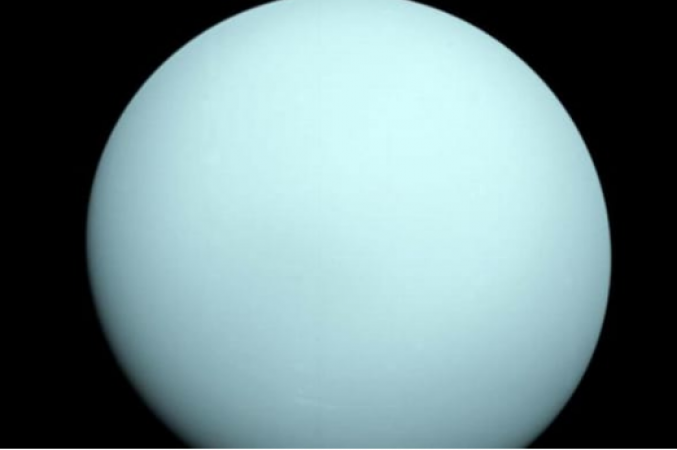
USA: For the first time, NASA researchers have discovered solid proof that Uranus has polar cyclones. At the planet's north pole, the phenomenon was seen. Due to the location of the planet in its orbit, researchers were able to obtain "unprecedented views" of the ice giant using ground-based telescopes. It's possible that Uranus is much more mysterious than we first thought.
According to NASA, the most recent discoveries confirm a "broad truth" about all planets in our solar system with sizable atmospheres. The atmospheres of the planets exhibit signs of a swirling vortex at the poles, regardless of whether they are primarily made of rock or gas, the agency said.
Researchers discovered a "compact feature" at Uranus' north pole that appeared to be warmer than its surroundings by observing radio waves the planet emits. The study that was published in Geophysical Research Letters states that this feature "likely indicates the presence of a polar cyclone. The polar cyclone on Uranus also "shows similarities to polar features observed on other giant planets in the solar system."
Also Read: UN requests $333 million for relief efforts in Myanmar following Cyclone Mocha
The Very Large Array observatory in New Mexico enabled researchers to examine Uranus's clouds in greater detail. According to NASA, the observations from 2015, 2021, and 2022 penetrated Uranus' atmosphere more deeply than ever. The team discovered that the planet's north pole's air circulation appeared to be warmer and dryer than usual, which are key indicators of a powerful cyclone.
The most recent discovery has been greatly influenced by Uranus' orbital position.
A full orbit of Uranus takes 84 years to complete. The planet's poles had not been pointing towards Earth for a number of decades. But starting around 2015, astronomers have improved views and have been able to peer deeper into the planet's atmosphere at the poles.
Also Read: EU applauds Ukraine's decision to purchase F-16 jets, and pilot training has begun
"These observations give us a lot more information about Uranus's history. The world is much more dynamic than you might imagine, according to the study's lead author, Alex Akins. It's not just a simple blue ball of gas, either. There is a lot going on underneath the hood.
With its compact structure and warm, dry air at its centre, the recently discovered cyclone on Uranus resembles the cyclones seen on Saturn. According to a blog post by NASA, all of the planets in our solar system except for Mercury now have cyclones or anti-cyclones at their poles. These systems rotate in the opposite direction from cyclones.
Also Read: Russia criticises the United States' 'illogical' visit with an aircraft carrier to Norway
Cyclones on Uranus and Saturn do not drift and are fixed at the poles, in contrast to those we observe on Earth. The newly discovered Uranian weather formation will be closely watched by scientists in the years to come to see how it changes.